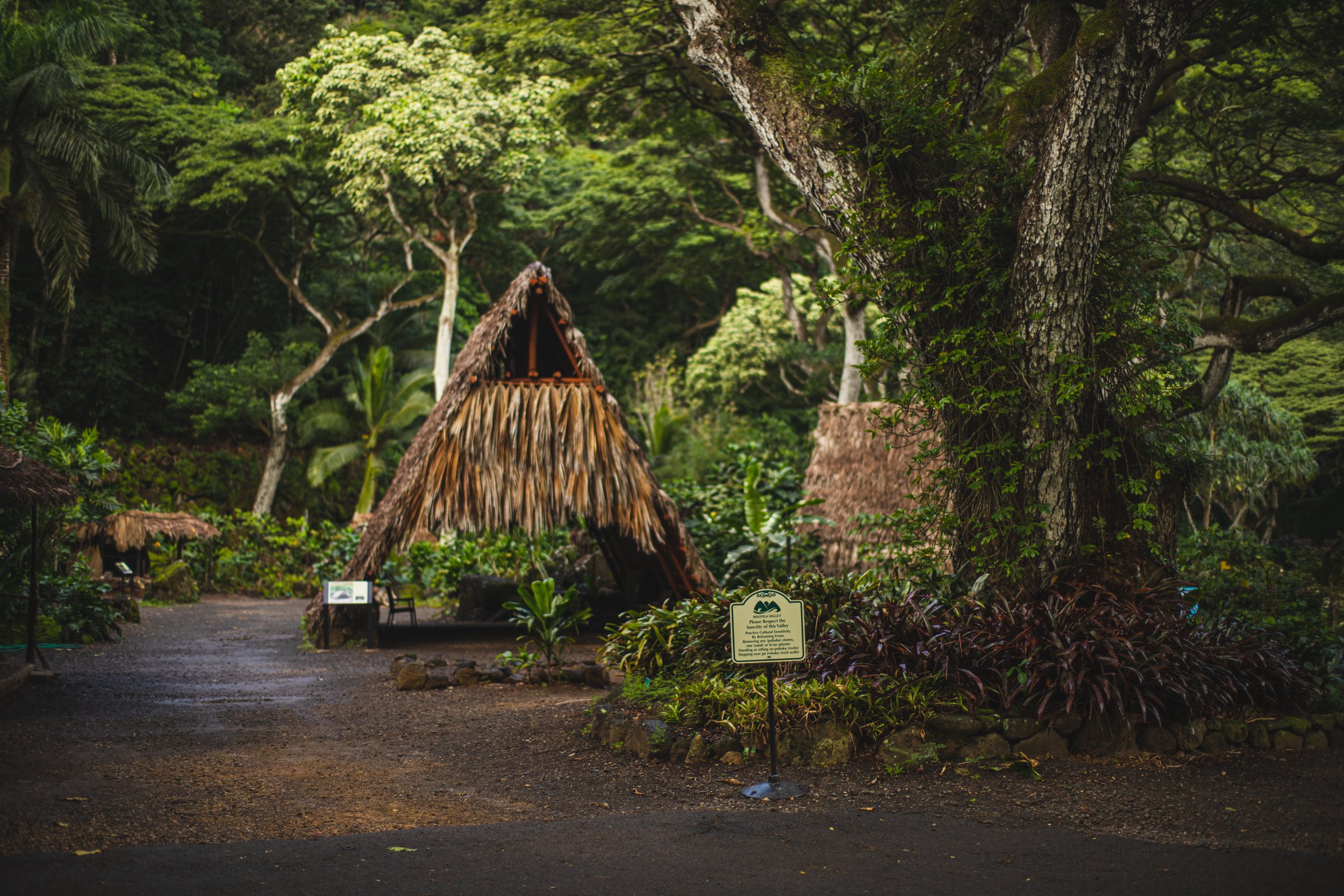Cultural Sites
Hale O Lono
The first significant site you will see as you enter the Valley is Hale o Lono (House of Lono), dedicated to the Hawaiian god, Lono. This heiau (religious place of worship) is believed to have been originally constructed around 1470 AD.
Lono is associated with peace, fertility, agriculture, rainfall and music. Each year, during ho‘oilo (winter, rainy season) which lasts from about November through February, Lono is acknowledged as the presiding god. During the time of Lono, called Makahiki it was a time of rest, sport and celebration. It was also a time of tax collection in the form of offerings to Lono were collected at each ahupua‘a. Offerings included food such as taro, sweet potatoes, chickens and dogs, dried fish, clothing, cordage, feathers, or anything else of value.
This site is still used today by Hawaiians who participate in traditional practices.
Ku‘ula Shrine
These pohaku (stones) are a ko‘a (shrine) dedicated to the fishing god, Ku‘ula. In Hawaiian tradition, fishing is an integral part of everyday life and many prayers and ceremonies are offered to ensure successful catches.
The first, best or largest catch was presented at the ko‘a as an offering to the fishing gods to ensure safety and future catches.
Kauhale Kahiko
A kauhale (many houses) is a traditional Hawaiian living site for a high-ranking chief or priest. Hawaiians did not live in homes like we do today, with many rooms under one roof – rather – each room is its own dwelling place, either a hale (house) or a simple lean-to. The entire living site is known as the kauhale.
Hawaiian hale are constructed from natural materials including wood, grass and coconut-fiber cordage. In an effort to provide visitors with an understanding of what this kauhale was like, the hale are re-constructed using traditional techniques and materials.
Hale Iwi
(Above the Hawaiian Ethnobotanical B section)
Hale Iwi (House of Bones) is an extremely special and sacred site within Waimea Valley. Based on archaeological research, this site shows many signs of being a burial temple for a well-loved, high ranking person. It appears to have been built in three phases beginning in the 1600’s. As one of the largest pre-contact structures in the Valley, its size indicates considerable energy was expended in its construction and over thirty archeological features have been documented here.
Lo’i: Agricultural Terraces
Māla, means “garden”, and loʻi means “irrigated terrace” in Hawaiian. Hawaiian farming centered around kalo, or taro, the plant used to make poi. Farmers planted and harvested their crops by hand. They also developed sophisticated irrigation systems to send fresh water through their growing fields. Mahiʻai (farmers or planters), used their hands, feet, and an important tool called an ʻōʻō. This tool was used to dig holes for planting and to weed. They worked the land with a belief in e ola pono, living in harmony, and aloha ʻāina, love for the land.
Wailele Waimea: Waimea Falls
The wailele at the back of the Valley is a sacred site. The name of this Hawaiian waterfall changes depending on the amount of water that is flowing. When the water flows gently, the name is Waihe’e, meaning softly dripping water. After heavy rains, when more water is flowing, its name is Waihi, which means purging water.
The rains of the Ko’olau (windward) mountains, many miles away, flow into Kamananui stream and affect the flow of the wailele. During the winter months, in times of especially high rainfall, the Valley has flooded many times throughout history, including most recently in 1990. In contrast, the waterfall sometimes disappears entirely for days at a time in the dry Summer.
Wai (freshwater) is sacred to Hawaiian people. Ka wai ola, or life-giving waters, in the form of rivers, streams, springs, and ponds represent life, purity, and health. The word for wealth or value in Hawaiian is waiwai (water-water), because of its necessity for sustaining life. In the past, Hawaiians never defiled a freshwater source. All bathing and washing were done closer to the ocean, near the end of the stream or river.








